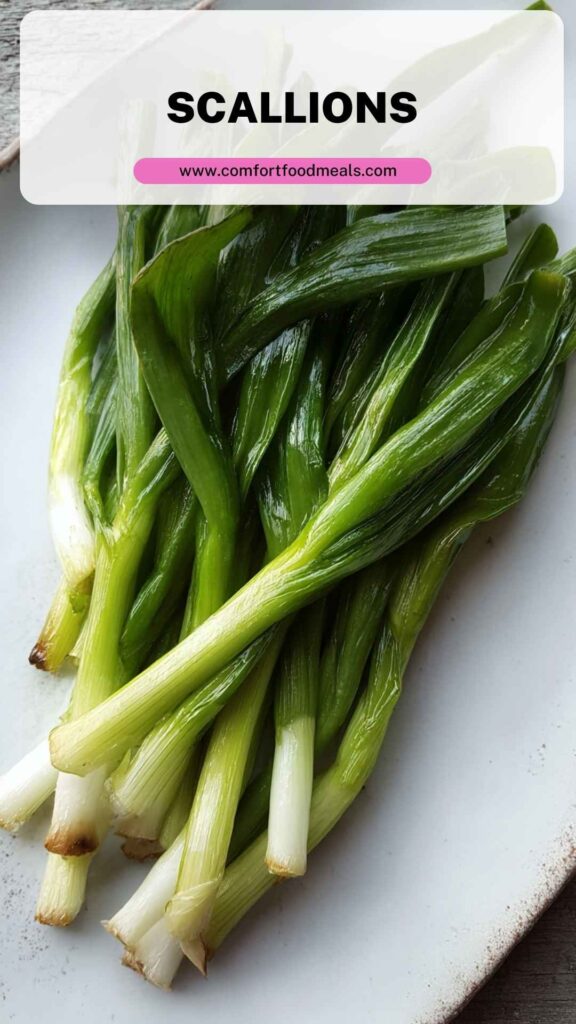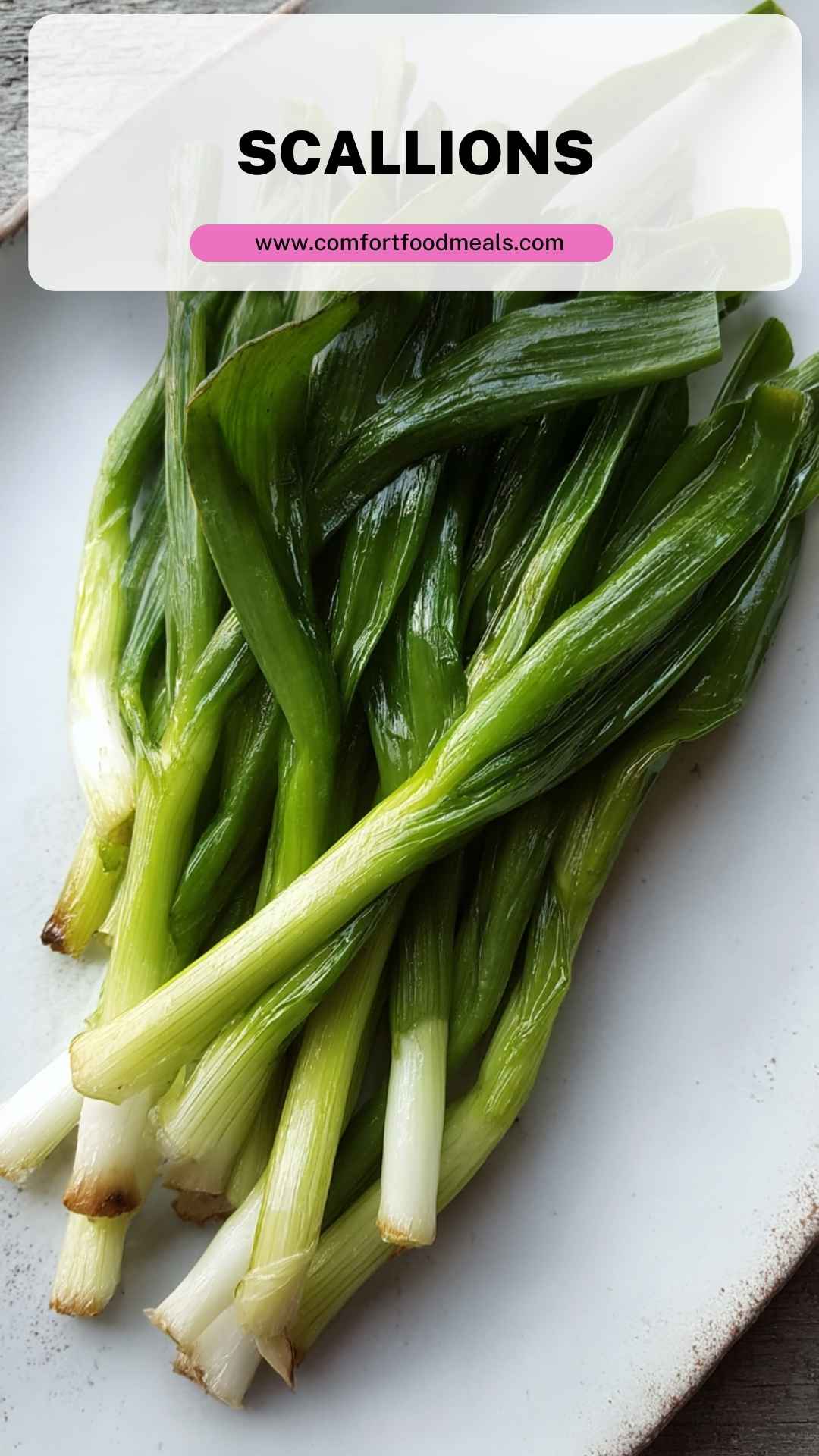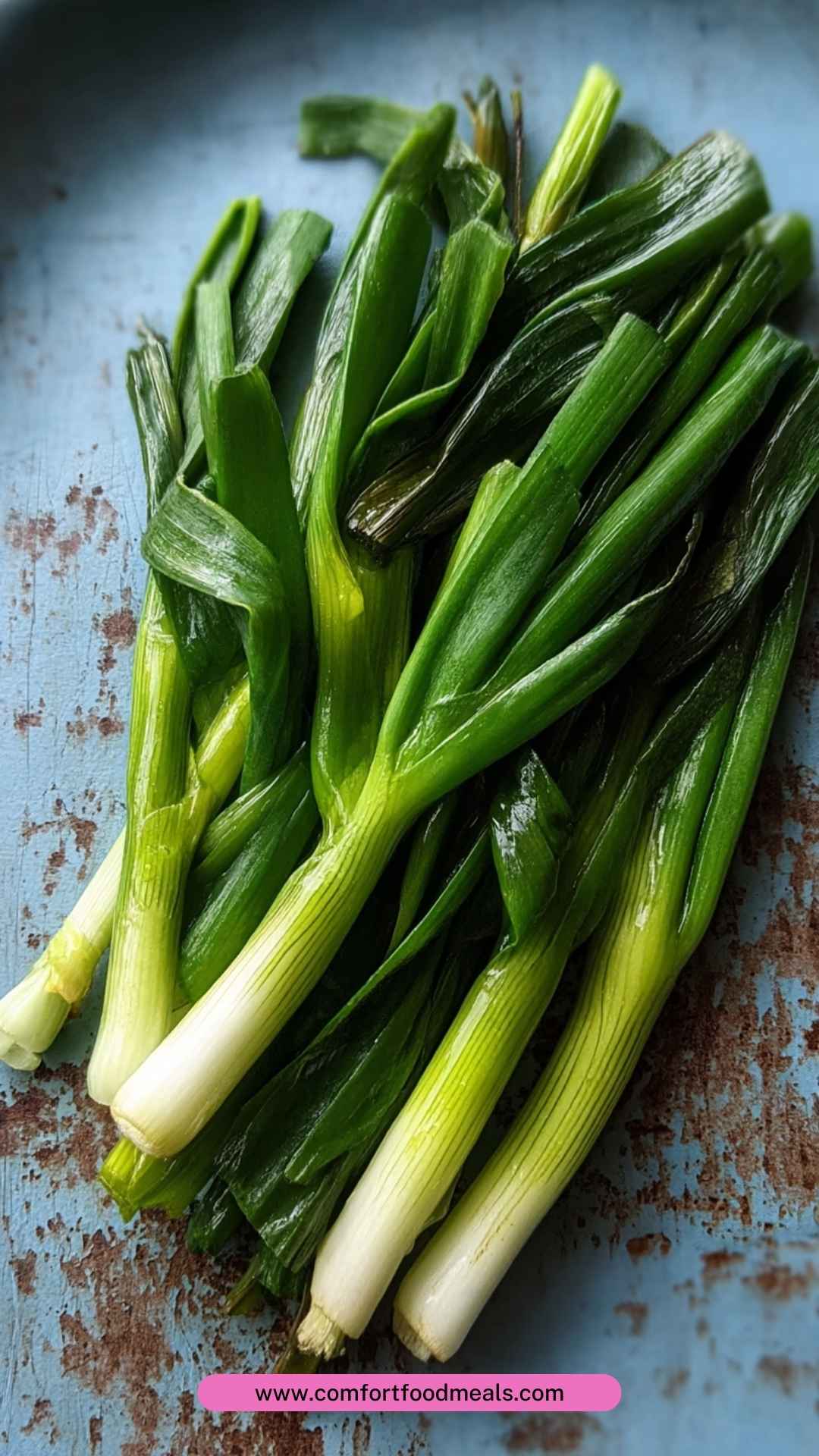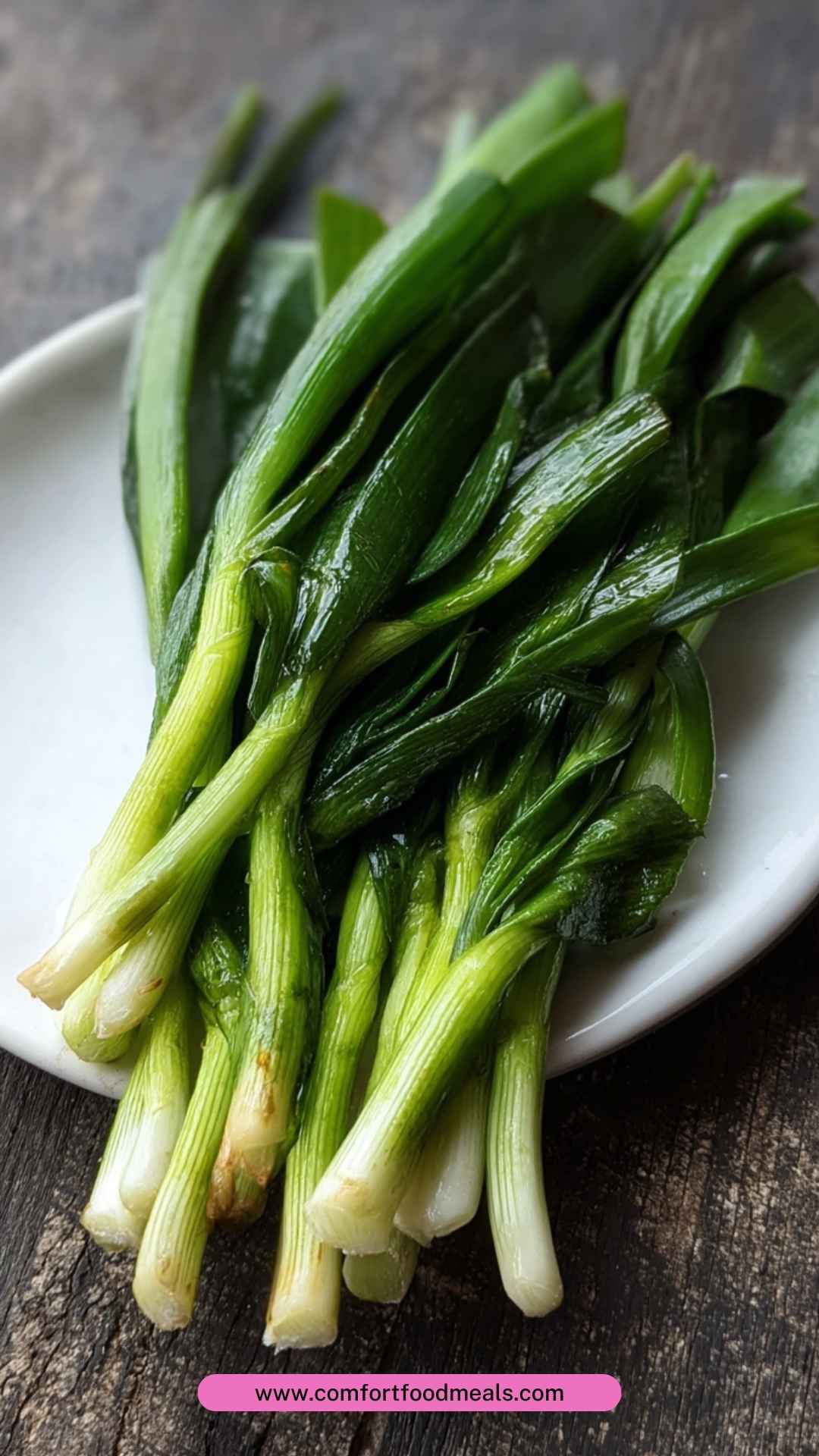It's early evening, the sun is setting just right, and I’m in the kitchen preparing a delightful Italian Pasta Salad.
The vibrant colors of fresh vegetables are inspiring me. I grab my bunch of fresh scallions, and immediately, I know they’re going to elevate my dish to a whole new level.
Scallions, or green onions as some call them, bring a punchy flavor without overpowering the delicate balance of the salad. They add freshness and a subtle crunch that complements the creamy dressing beautifully.
If you’ve never given scallions a starring role in your cooking, believe me when I say, you’re missing out!
What are Scallions?
Scallions are young onion shoots that fall within the Allium family, which also includes garlic, leeks, and, of course, onions. What sets scallions apart are their mild taste and the versatility they bring to the table.
They have a white base that transitions to a vibrant green top. While the entire plant is edible, many choose to use both the white and green parts for various culinary delights. Scallions add not just flavor but color and brightness, making any dish look more appealing.
Ingredients
Before diving into the preparation, here’s what you'll need to grab from your pantry and fridge:
1 tablespoon extra virgin olive oil
4 bunches of fresh green onions (scallions), finely sliced
½ teaspoon freshly cracked black pepper
3 tablespoons of creamy unsalted butter
How to Make Scallions?
In this section, I’ll show you how to prepare scallions effectively. While they may seem straightforward, there are some nuances that’ll make your culinary experience richer and more enjoyable.
Step 1: Choose Fresh Scallions
The first step is crucial. Head to your local grocery store or farmers' market. Look for scallions that have firm, crisp green tops. Avoid any that appear wilted or yellowing. Freshness makes a difference.
Step 2: Clean the Scallions
Once home, take your scallions and rinse them under cold running water. Dirt can hide in the layers, so it’s important to make sure they’re clean. Gently pat them dry with a kitchen towel. Trust me; clean scallions taste better!
Step 3: Trim the Ends
Now, grab your knife. Cut off about half an inch from the roots at the bottom. This removes any dried parts that could alter the flavor of your dish.
It’s a simple step, but it’s so satisfying to see those fresh green tops.
Step 4: Slice the Scallions
Lay the scallions flat on a cutting board. You can slice them into small rounds or diagonally, depending on your preference.
When you chop them, the green parts give a delicate crunch and flavor, while the white parts are slightly stronger, adding depth to any meal.
Step 5: Cooking with Scallions
Heat a skillet over medium heat and add olive oil and butter. Once melted, toss in your sliced scallions, sautéing them for just a couple of minutes.
You’re looking for the vibrant green color to soften, but they should retain some bite.
Notes
Here are some tips to keep in mind while working with scallions:
- Choose wisely: Scallions should be firm and vibrant in color. Faded greens indicate they’re past their prime.
- Storage matters: Store scallions upright in a jar with water, similar to how you’d treat fresh flowers.
- Use both parts: Don’t neglect the green tops. They are flavorful and colorful!
- Freshness counts: This ingredient is best when used fresh, so try to use them within a few days of purchase.
- Versatile use: Scallions can be used raw in salads, as toppings, or cooked into sauces for extra flavor.
Storage Tips
Properly storing scallions will keep them fresh longer. Here’s how to do it:
- In water: As mentioned, place scallions in a cup of water, stems down. Cover the tops loosely with a plastic bag and refrigerate.
- Wrap and refrigerate: You can also wrap them in a moist paper towel and place them in a zip-lock bag.
- Freezing: If you want to store them for a longer duration, chop the scallions and freeze them in an ice cube tray with water.
Serving Suggestions
If you’re ever in a jam on how to use scallions, here are five tasty serving suggestions:
- Salads: Scallions add a zesty kick to any green salad. Just chop and toss them into your favorite mix.
- Dips: Mix finely chopped scallions into cream cheese or Greek yogurt for a refreshing dip to serve with veggies.
- Tacos: Add scallions atop your tacos for that extra pop of flavor.
- Soups: Toss some into a steaming bowl of soup just before serving for added freshness.
- Stir-fries: Incorporate them into any stir-fry towards the end of cooking to keep their crunch.
What Other Substitutes Can I Use for Scallions?
Even if scallions are your go-to, here are some alternatives in case you find yourself without them:
- Chives: These have a similar mild flavor and are perfect as a garnish.
- Leeks: If you have some leeks, use the tender green parts as a substitute.
- Shallots: They have a sweeter taste and can add a unique flavor profile.
- Green bell peppers: A crunchier option if you want some bulk in your dish.
- Garlic chives: More garlicky, but they can work in a pinch if you enjoy the flavor twist.
Conclusion
Scallions might be a small ingredient, but their versatility and flavor carry a lot of weight in the kitchen. From enhancing a simple pasta salad to being that unexpected crunch in a soup, they deserve a spot in your grocery cart.
The next time you fire up the stove, don’t forget to include these vibrant green gems in your cooking. Their contribution can turn an ‘ordinary’ dish into something truly special. So, here’s to scallions: the underappreciated star of so many culinary creations!
You’ll also like the following recipes!





